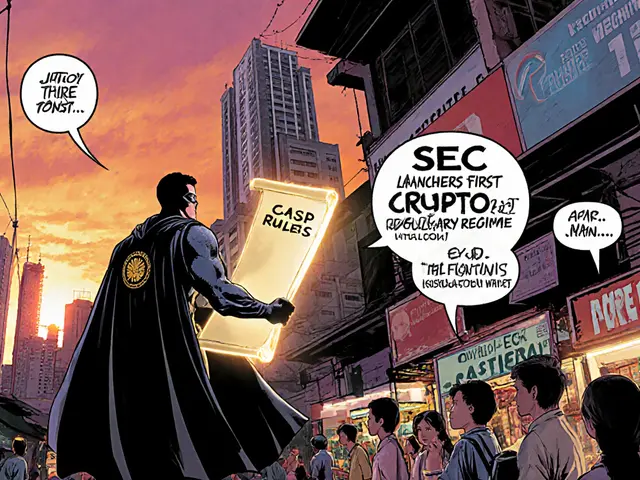DeFi Synthetic Options – How They Work, Risks & Opportunities
When working with DeFi synthetic options, blockchain‑based contracts that mimic the payoff of real‑world assets without owning them. Also known as synthetic derivatives, they let users gain exposure to stocks, commodities, or indices on a decentralized platform while keeping capital efficiency. This falls under the broader umbrella of decentralized finance, financial services built on open‑source protocols that run without traditional intermediaries, and relies on synthetic assets, tokenized representations of off‑chain values that are created and settled by smart contracts. At their core, they are a form of options contracts, agreements that give the holder the right, but not the obligation, to buy or sell an underlying at a predetermined price. Users mint a synthetic option by locking collateral—usually stablecoins or native tokens—into a smart contract, which then issues a token that tracks the chosen market move. When the contract expires, the settlement logic references the underlying price and returns either the payoff or the locked collateral. Traders use DeFi synthetic options to speculate on price swings, hedge existing positions, or capture upside without swapping the underlying asset.
Key Components That Power Synthetic Options
The accuracy of any synthetic option depends on reliable price oracles, on‑chain services that feed external market data into smart contracts in a trust‑minimized way. Leading oracle networks like Chainlink and Band provide signed price snapshots, while community‑run feeds add redundancy to reduce single‑point failure risk. Without trustworthy oracles, payoff calculations can drift, exposing users to unexpected loss. To supply the collateral needed for these contracts, platforms pool assets in liquidity pools, smart‑contract vaults that hold capital for minting, exercising, and settling synthetic positions. These pools often run on automated market maker (AMM) algorithms that rebalance assets as traders open or close positions, ensuring there is always enough backing for the synthetic tokens. Participants earn a share of the fees collected on option trades and may receive governance tokens, vote‑weighted assets that let holders influence protocol upgrades, fee structures, and new synthetic underlyings. This incentive loop aligns the community’s interest with the health of the option market, while also providing a mechanism for rapid adaptation to emerging market needs.
In practice, DeFi synthetic options let you speculate on Apple’s stock price, hedge exposure to gold, lock in yields from volatile crypto assets, or gain exposure to macro‑economic indicators—all without moving fiat or traditional securities. The risk profile blends smart‑contract vulnerabilities, oracle manipulation, and liquidity shortfalls, so users should audit a platform’s code history, check the depth of its collateral pools, and verify that its oracle sources are diversified. Regulatory outlook varies by jurisdiction; some regions treat synthetic tokens as securities, while others see them as commodity contracts, making compliance a moving target. Looking ahead, layer‑2 scaling solutions and cross‑chain bridges promise lower fees and broader asset coverage, potentially unlocking synthetic options on emerging markets like NFTs or real‑estate indices. By understanding how decentralized finance, synthetic assets, and options contracts intersect, you can decide whether this tool fits your strategy. Below you’ll find a curated set of articles that break down tokenomics, platform reviews, and step‑by‑step guides to help you navigate the space confidently.

Learn why Divergence hasn't launched a classic airdrop, how DIVER tokens were distributed via a Dutch auction, and step-by-step ways to earn rewards through liquidity provision.
Continue Reading





